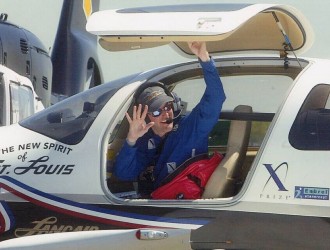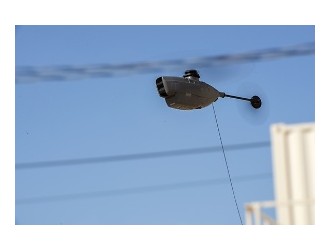
Due to ship in the second quarter, the M200 will be offered in three versions: the basic M200 with one downward-facing gimbal mount; the M210 with options for one single downward-facing gimbal mount, two parallel downward-facing gimbal mounts or one upward-facing gimbal mount; and the M210RTK fitted with D-RTK differential GPS antenna modules for “centimeter-precision” navigation and positioning.
The M200 has a forward-facing, “first-person view” camera, allowing a pilot and a camera operator to monitor separate images on dual controllers. The aircraft has forward-, up- and down-facing obstacle avoidance sensors. DJI AirSense, an ADS-B receiver, provides the pilot with “advisory” traffic information on nearby manned aircraft equipped with ADS-B transmitters.
With AirSense, the M200 will receive position information from other aircraft, but not transmit its own position, DJI said. However, the company announced last July that it is collaborating with uAvionix Corporation of Palo Alto, California, on ADS-B-based collision avoidance capability. uAvionix produces a miniature “ping2020” transceiver that enables a drone to transmit its position to other aircraft on the 978MHz UAT frequency.
The name behind the ubiquitous Phantom consumer quadcopter, DJI also produces the professional-grade Inspire quadcopter, the Matrice 600 hexacopter and the Zenmuse line of gimbals and cameras for aerial photography. Skylogic Research of Redwood City, California, estimates that DJI commands 50 percent of the North American market for small drones; for professional-grade machines costing from $3,000 to $7,500, DJI has 67 percent of market share.
“Drones have quickly become a standard part of the enterprise toolkit and industrial users have come to rely on DJI technology to efficiently collect aerial data,” said Paul Guo, DJI director of enterprise solutions. “With the M200 series, DJI introduces a holistic solution designed specifically for these users.”





